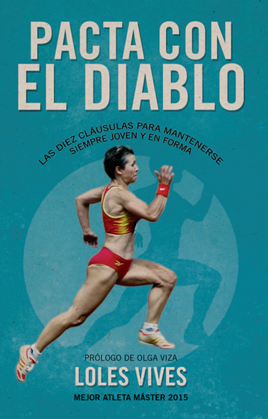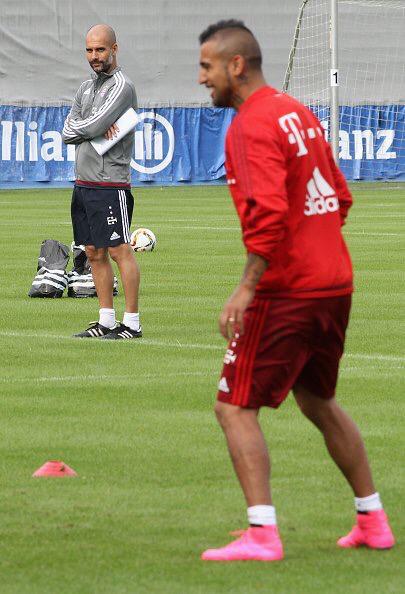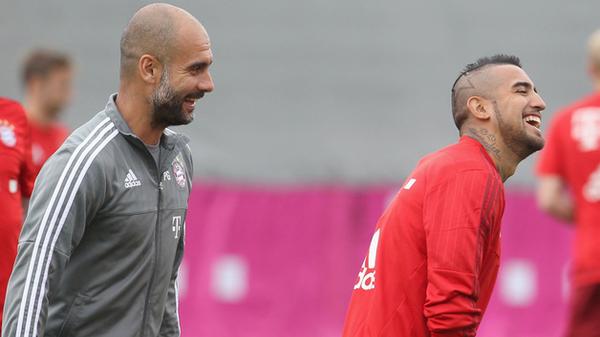Perarnau Magazine
"Hay que recordar que quienes escriben para los imbéciles siempre tienen un numeroso público de lectores". Arthur Schopenhauer

Understanding why Vidal is vital to Guardiola’s plans
Arturo Vidal’s signing for Guardiola’s Bayern is anything but surprising. The Catalan manager is simply taking another step forward in the search for maximum verticalization of his team, an objective he had since his first day in Munich. Vidal will bring one important virtue above all others: his powerful runs into the area. This was the main characteristic that Guardiola wanted to add to Bayern when the Transfer Committee (Rummenigge, Dreesen, Sammer, Reschke and Guardiola) met in February to determine what the team needed for the following season. Around that same time, Juventus already had a good idea of their expected comings and goings for this Summer. Beppe Marotta, Fabio Paratici and Xavier Ribalta knew that the team managed by Allegri, who, at that point, would never have dreamed that they would even reach the semifinals of the Champions League, would lose at least three key players: Pirlo, Tévez and Vidal. The replacement for the first was already there (Marchisio), the replacement for the second was already being talked about (Dybala, although the intention was to bring in another number 9; that’s where Mandzukic comes in) and the replacement for the third would be put off until summer, even though the Turin-based team have come to a predetermined agreement regarding the potential candidate to occupy their midfield and this option is just pending its completion (We may also see the addition of a left back).
Meanwhile, Bayern’s coach set two objectives: increase the team’s dribbling capability, which up until now has been restricted to Robben and RibÉry, and acquire a midfielder who excels in late runs into the box and scoring goals. Unfortunately, currently there is a deficit of talented attackers that fulfill the first role, especially because of the inflation of the English transfer market thanks to the Premier League’s new TV deal. This led Guardiola to settle for Douglas Costa, a skillful attacker who can cover that role to some extent but isn’t at the level of Robben or RibÉry. The Dutch-French duo is one of Bayern’s strong points but also its Aquilles Heel: when they’re both on form and firing they form one of most powerful partnerships in football, but they are unreliable and often injured. Costa is a good start but he may not be enough to make up for the lack of creative flair Bayern has up front.
Michael Reschke, Bayern’s sporting director, proposed Arturo Vidal to cover the second role – the vertical, attacking midfielder. Reschke was the person who first brought Vidal to Germany, to Bayer Leverkusen, and all the members of the sporting commission were pleased by the proposal – especially Guardiola – because the Chilean perfectly fulfills the role Pep sought in his new midfielder. He is physically powerful and can penetrate the box and score. Jorge Sampaoli spent some time in Munich back in February, and his input on Vidal and that of his close collaborator Juanma Lillo further cemented the Bayern brass opinion of him.
To understand Guardiola’s objective with the Chilean, one must first understand some of the core principles of his approach to football: verticality, aggressive pressing, and full-backs occupying the roles of the midfielders.
VERTICALITY
Guardiola’s football philosophy elicits almost universal confusion. This can largely be attributed to the Spanish press, the majority of which was never able to understand how Barcelona’s positional play worked. Mixing up causation and consequence, tactics and strategy, and frequently making confusing and inaccurate interpretations of Barça’s football, the Spanish media contributed to the spreading of many erroneous notions like the famous “tiki-taka”, false dogmatism around maintaining possession, which is a preference for horizontality etc. Before taking this for granted it would be best to re-watch the 2-6 victory over Real Madrid in the Bernabéu to understand how a team can use long, continuous passing sequences to organize itself around the ball while at the same time enable vertical, lightning-quick counter-attacks. Perhaps the best way to describe it is Guardiola’s own words:
I hate tiki-taka. I hate it. Tiki-taka means passing the ball for the sake of it, with no clear intention. And it’s pointless. Don’t believe what people say. Barça didn’t do tiki-taka! It’s completely made up! Don’t believe a word of it! In all team sports, the secret is to overload one side of the pitch so that the opponent must tilt its own defence to cope. You overload on one side and draw them in so that they leave the other side weak. And when we’ve done all that, we attack and score from the other side. That’s why you have to pass the ball, but only if you’re doing it with a clear intention. It’s only to overload the opponent, to draw them in and then with the sucker punch. That’s what our game needs to be. Nothing to do with tiki-taka.
This is what motivated the Xabi Alonso signing. The Basque defensive midfielder pointed out that in all the discussions he had with Guardiola one stuck with him the most: “Pep definitely surprised me. He’s always asking me to play vertically. Vertical passing. To the wings or the center of the pitch, but always vertical”.
Signing Vidal will strengthen Bayern’s midfield and will allow the Bavarian team to reach the penalty box with authority and threaten the opponent’s goal.
PRESSING OPPONENTS
The second characteristic the Chilean brings to the table is his ability to contribute to Bayern’s high pressing when opponents are playing the ball from the defence. Lewandowski and Alaba already do a good job at it and Vidal has the ability to do it. The rest of the team also participates, but they lack the understanding of when and where to press opponents for maximum effectiveness. Bayern’s pressing is usually intermittent. When they lose the ball while attacking, they press to attempt to recover it quickly, but when an opponent opens play slowly and deliberately from the back four, Guardiola’s team will alternate phases of intense pressure with resting periods in which they give opponents more space. When they press they always do so with intensity, but sometimes they lack organization and coordination. Vidal shares Lewandowski and Alaba’s ability to make accurate readings of these types of situations, and his addition will improve Bayern’s efforts at pressing.
He is also very physically gifted which will enable him to contribute a lot during the defensive transition phase of play, one of the main weaknesses of a team that tries to spend as much time as it can in the opponent’s half.
FULL-BACKS AS MIDFIELDERS
Vidal’s move to Bayern wouldn’t make sense without one fundamental premise, a tactical adjustment implemented by Guardiola in his first season in Munich and refined last year. Among the many changes the Bundesliga has wrought on Guardiola’s tactical manual, the role of full-backs in his system is one of the most notable changes. During his first year Pep decided to remove his full-backs from their position on the flanks while Bayern was building play or was engaged in a static attack, instead moving them inwards to be paired up with his holding midfielder. By doing this Pep created a line of three –the two full-back’s plus the defensive midfielder– that would hold in front of the centre backs and give the rest of the midfield players freedom to roam. Up front, the flanks were occupied by midfielders and wingers depending on the situation, while in defensive transitions the robustness of this line of three allowed Bayern’s attackers and playmakers to press more vigorously, with Alaba and Rafinha’s speed greatly contributing to blocking and opposing counterattacks.
During his second season in Munich Pep consolidated his idea of full-backs as midfield partners to a holding midfielder (in this case Xabi Alonso), and in December 2014 he explained his reasoning in tactical discussion: “My understanding of the full-back’s role has changed in Germany. I now see them as central midfielders and this will allow me to start using a new style of midfielder, very different from the ones I’ve had up until now such as Xavi, Iniesta, Thiago, Lahm, and Götze. Now I can sign a vertical threat and play him with the knowledge that he won’t become a liability in defense”.
These three factors explain Vidal’s transfer to Bayern Munich, but we must not forget about a fourth point: ever since his first days at Barcelona, Pep’s goal has always been to have teams where each player can play two or three different positions. This doesn’t mean he wants to effectively have two players per position, but rather that he wants players that can fulfill two or three different roles in the team. And in this regard Arturo Vidal is a great signing, as his versatility fits perfectly with what his new coach seeks.
– Translator: Samuel Rosenstein @leoben1937


BUSCADOR DE CATEGORÍAS
BUSCADOR POR MES
ÚLTIMOS TWEETS
Tweets por @martiperarnauSÍGUENOS EN FACEBOOK







